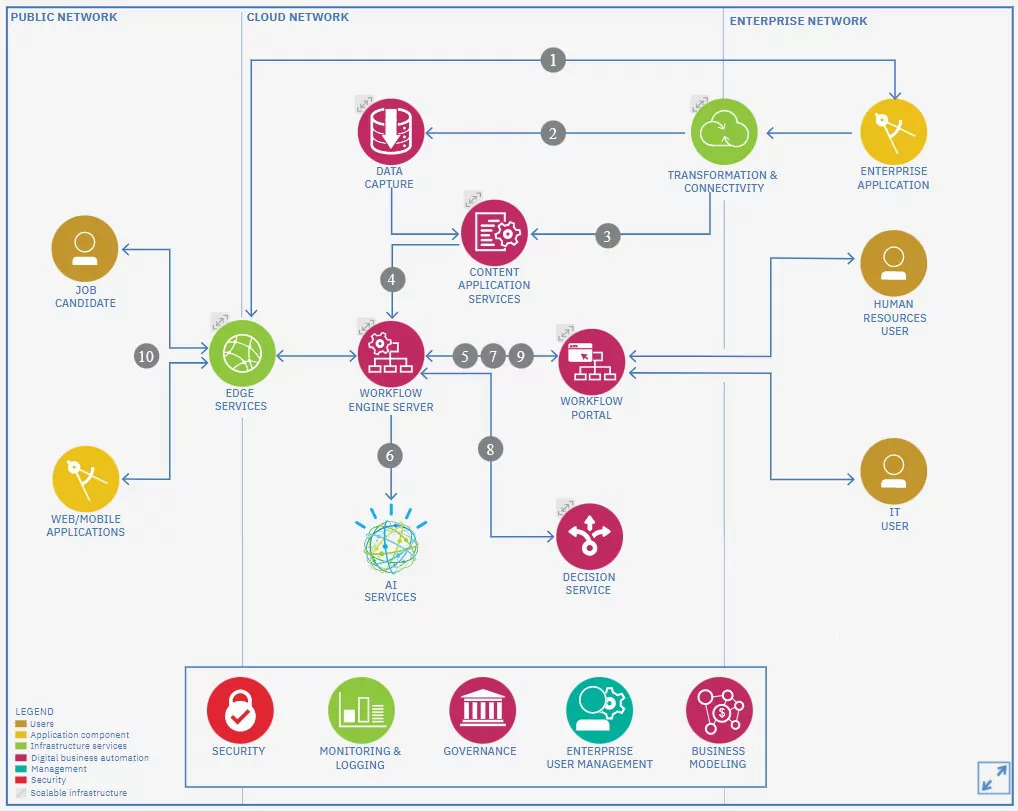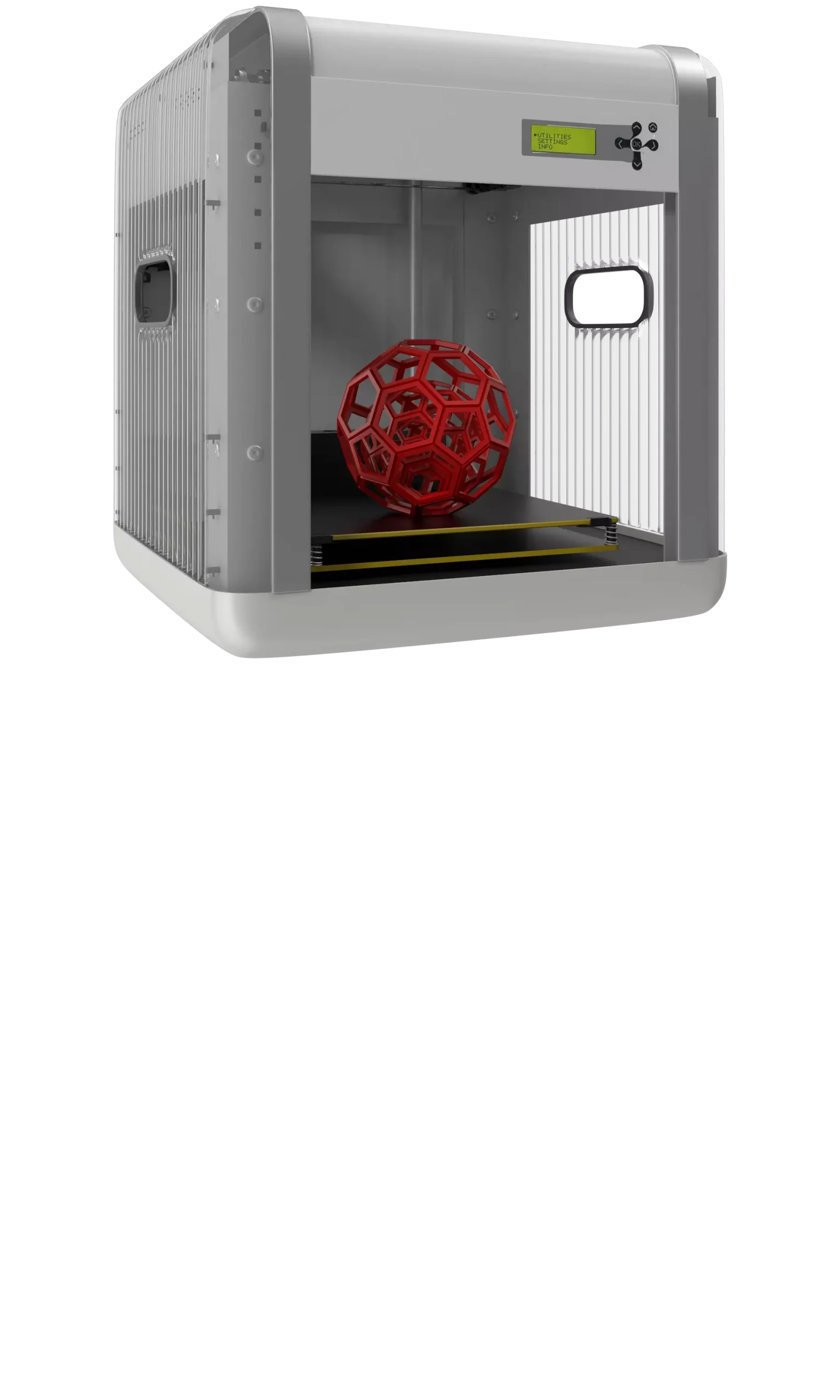Innovation Alphabet
Robotic Process Automation (RPA)
In a nutshell
Let’s face it, anyone would be happy to say goodbye to the small, tedious tasks that we perform every day. Well, Robotic Process Automation (RPA) is an emerging technology that simplifies business operations and reduces costs by entrusting so-called “software robots” to perform the most repetitive tasks.


Application Fields
• Absence management: It can be difficult to manually manage employees absence for so many reasons. For example, employees might forget to log their time off and deductibles for unaccounted vacation days. The process is time-consuming and prone to human error. It is estimated that inefficient absence management costs companies almost $3,000/year for each salaried employee. But businesses can set up a simple RPA bot to cross-check absentee reports against time logged in the corporate network and let your teams fill in their absences.
• Periodic report preparation and dissemination: Every company requires regular reports to inform managers and teams of their progress. RPA solutions can auto-generate reports, analyze their content, and email them to relevant stakeholders. For example, a telecom operator who needs to send each report about connectivity issues to the correct person in charge. RPA bots could analyze reports to modify recipients according to provided criteria.
• Customer onboarding: B2C businesses usually have a customer onboarding process that is critical to reduce churn and prompt customers to start using their product. With RPA, most customer onboarding processes (e.g., contract generation) could be completed quickly even in companies that rely on legacy systems.
Do you have a Strategy & Innovation challenge to tackle? Let’s face it. Together.
C-levels from these companies (AND MORE) relied on my expertise to overcome thEIR CHALLENGES IN THIS AREA. And You can, too.
Can I help you?Industries
• RPA in the pharmaceutical industry
Boston Scientific, a U.S. company involved in the development, production, and sale of biomedical devices, decided to implement robotic automation to improve processes related to customer care. Specifically, it came up with the Latitude Consult Communicator. It is an electronic device that can read data from another device implanted inside the patient. It then sends information about the body’s progress and proper functioning to a central server.
• RPA in the energy industry
Lyse, a Norwegian renewable energy production and distribution company, realized that RPA was the technology to invest in to speed up essential repetitive tasks that were not generating any added value. The first bots were used to help IT, human resources, customer service, and back-office departments. Smart software then enabled Lyse to recover valuable manpower, previously held back by slow but mandatory applications to dig trenches in which to run cables. The company was thus able to focus on the truly productive and high-impact processes, leaving employees to focus on the higher-value work.
• RPA in the service industry
Australia Post is an Australian government-owned company that provides postal services across the nation. The accounting team has to deliver efficient results and keep accounts in a timely manner. Those processes are largely manual and often inefficient, impacting workflows throughout the department. Robotic automation of 25 low-value-added tasks enabled Australia Post to strengthen productivity within the department and offer employees the opportunity to develop skills that software could not yet capture.
Business Functions
• RPA in support of HR
Efficient onboarding and offboarding can reduce the burden on the HR staff and ensure continuity. In the onboarding case, having an AI-enabled tool can further facilitate the process, and help recruiters assess candidates based on data-driven insights. For example, IBM’s AI-enabled RPA solution triggers a workflow process for each new application submitted. It also automates the capture of new application documents and centralizes the storage and governance in an applicant folder.

• RPA in support of management
State Auto Financial Corporation, a U.S. insurance company, uses robotic automation technology to optimize the management of claims-related activities. By harnessing software intelligence, the company is able to save more than 60,000 man-hours in one year, freeing up staff to act more closely with potential new customers, improving their experience. Sales doubled to $3 billion.
• RPA in support of CRM
Adding interactions with prospects to CRM is critical, even though time-consuming. Looking for a solution, companies are building bots to update CRM records with customer contact information. Take Cobmax, a sales call center. Staff worked long hours cutting and pasting information from one CRM system into another, due to outdated and manual administrative systems. And this led to their client reporting being frequently delayed. But after implementing IBM RPA, the company managed to produce accurate customer reports in half the time or less. They reduced back-office operations by half, allowing more staff to work in strategic, growth-supporting positions.
Stay in wonderland
Let me show you how deep the rabbit hole goes.
Check out more of the Innovation Alphabet:

3D Printing
3D Printing
“3D printing” is a process carried out by an electronic device which, instead of resorting to the canonical ink, it molds almost any kind of material: from concrete to living tissue, most usually plastic, but also metal. And the operating principle is similar to that of a traditional printer. The creation of three-dimensional models can lead to the redesign of a company’s production capabilities.
Dive In
5G
5G
5G is the new frontier of cellular telephony. It was designed to improve (or completely replace) previous generations of mobile networks. The 5th generation features lower latency, ensuring flawless performance of business applications and many other digital experiences – thus enabling the new cultural generations to furiously play Fortnite away from home.
Dive In
Advanced Analytics
Advanced Analytics
The term “Advanced Analytics” refers to the ability to autonomously or semi-autonomously analyze data and content to identify correlations, develop analyses, predictions, and recommendations. It is not just a matter of collecting information and then organizing it into watertight compartments: the ultimate goal is to identify a dialogue pattern from a data-driven perspective.
Dive In
Agile
Agile
Agile is an approach to software development designed to respond to change. Teams quickly analyze the context in which they operate, identify uncertainties faced, and figure out how to adapt to always move forward. Interaction between individuals comes before processes and tools; collaboration with the customer is more important than negotiating contracts.
Dive In
Ansoff Matrix
Ansoff Matrix
The Ansoff Matrix is a marketing planning model that arises from the intersection of new and existing products and markets. It derives four possible strategies for expanding the company’s market, which are built around four variables with a changeable factor of risks and possibilities: existing product, new product, existing market, new market.
Dive In
Artificial Intelligence
Artificial Intelligence
Artificial Intelligence is not strictly defined. Basically, it is a computer system able to make decisions in an independent and flexible way. A good AI application can perform everyday tasks better than an average person (e.g., identifying other people from their photos on social media or beating the best chess player). Nothing to fear, then. Unless you are a chess champion.
Dive In
Artificial Scarcity
Artificial Scarcity
We often tend to desire what we cannot have. Or what we are in danger of losing: Artificial Scarcity is a strategy that flaunts a limited number of items that do not correspond to actual availability. The goal is to stimulate the perception in consumers that the stock of items is about to run out and thus create a need based on the “fear of being cut off” or the intention to buy the item in order to resell it at a higher price.
Dive In
Attack Surface
Attack Surface
The term attack surface refers to the part of a system that may be subject to attack or breach by hackers. The smaller that surface is, the easier it will be to protect it. Indeed, the Internet is an ocean of deep, dark waters: those who navigate it must be aware that they are exposing themselves to a flood of digital risks. Yet, ironically, we do not need a big boat to shelter us.
Dive In
Augmented Reality
Augmented Reality
Augmented Reality is an ever-evolving technology that overlays multimedia information on top of our common sensory horizon to gain a deeper understanding of our surroundings. No, it doesn’t allow you to step out of the Matrix dream simulation, nor can it be accessed by swallowing a red pill. But neither is it the disturbing experience of the Playtest episode of Black Mirror.
Dive In
Balanced Scorecard
Balanced Scorecard
In business, as in life, you need balance. The Balanced Scorecard is a holistic tool for strategic management. It offers, in fact, the possibility of assessing corporate performance in its wholeness. An overview that embraces four perspectives: the business/financial side, customers and stakeholders, internal processes, and learning and growth.
Dive In